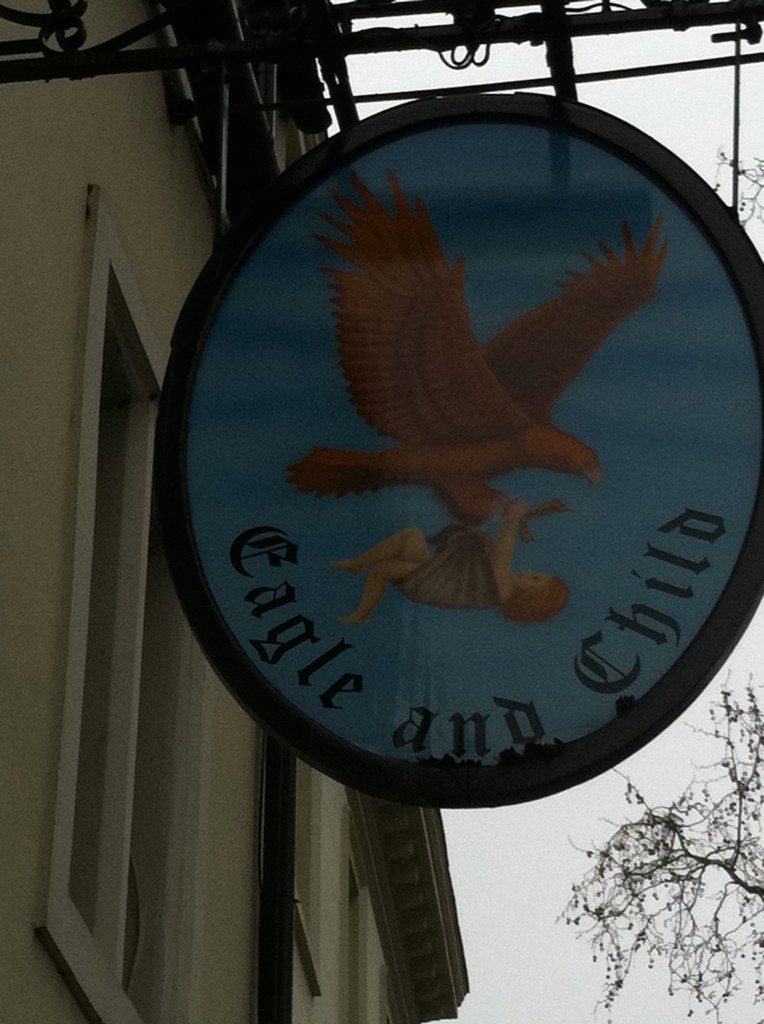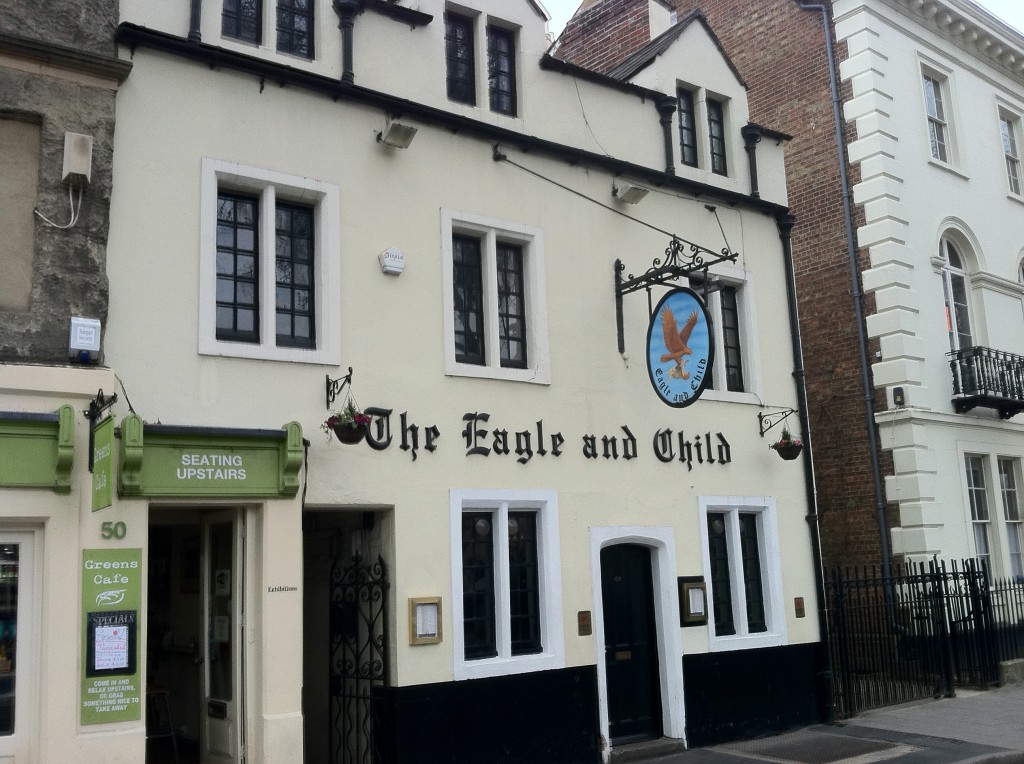
By Patrick Hunt –
C.S. Lewis (1898-1963) had a long half century of association with Oxford, commencing as an Oxford university undergraduate and continuing in a three decade teaching fellowship from 1925-54 at Magdalen College, Oxford University. One of the most enduring, accessible relationships “Jack” Lewis – as he was known to his friends – enjoyed can still be found today in the popular venue he shared at the now famous pub Eagle and Child on St. Giles Street. The “Inklings” were a group of literary friends who met to read and discuss their works by the fire with a pint or more of beer. J.R.R. Tolkien, who greatly influenced Lewis’ broadly ecumenical Christianity, was arguably the most famous of the Inklings along with Lewis. The Inklings included Charles Williams and Owen Barfield, among others.
As early as 1929 the Inklings gathered in and around Oxford and, in the growing shadows of war, 1939 appears as the year when the Inklings most frequently met at Eagle and Child. The ominous war clouds over continental Europe, including rumors of the Nazi Holocaust and the invasion of Poland even made their way into their fictional works as glimmerings of the universal battles between forces of good and evil like those in Tolkien’s Lord of the Rings epics and against Queen Jadis of Charn in Lewis’ Narnia, although Tolkien had personally experienced World War I in the trenches and thought it was just as painful as World War II. Their correspondence between the Inklings reflects men deeply anxious about their times, as were all thinking people, but with a perception that the world was up against something greater or worse than mere fallen humanity.
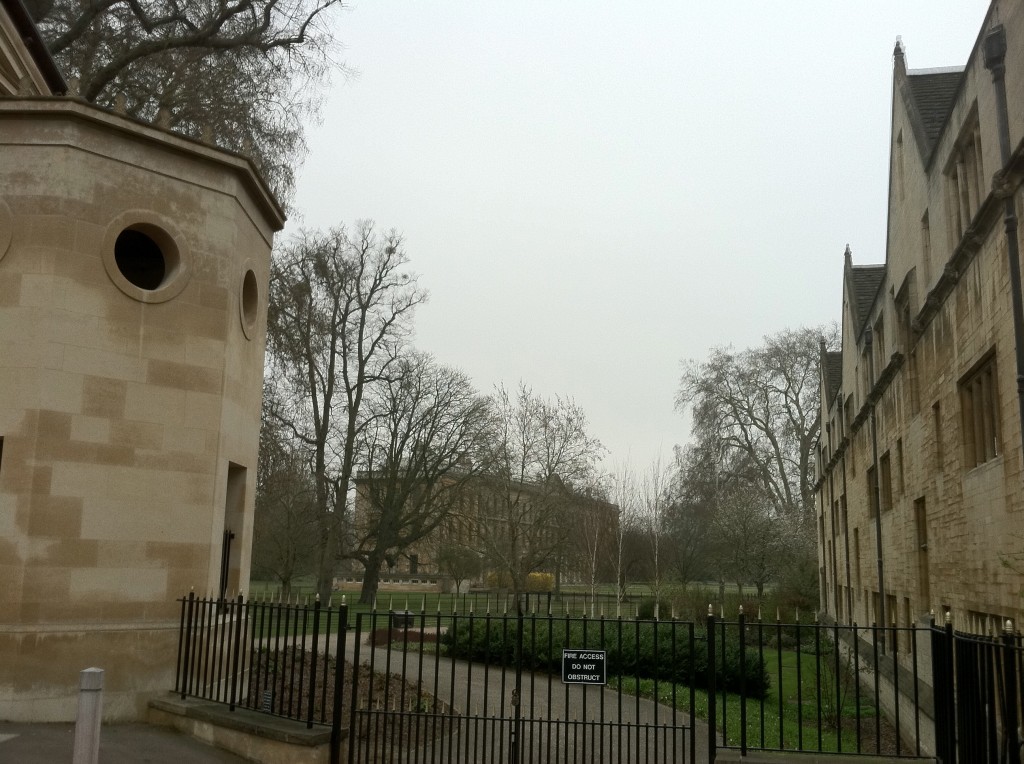
Tolkien often mentions Lewis in his letters to his son Christopher and corresponded with Lewis as well on quite a few occasions. The Inklings felt some literary responsible for one another as critics and while never nasty, they could be hypercritical. In one of Tolkien’s letters of 1948 to Lewis after Lewis complained of being “pained” by his subtle criticism of one of his works, possibly his English Literature in the Seventeenth Century in the Oxford History of English Literature Series (OHEL), Tolkien wrote to Lewis:
“But I warn you, if you bore me, I shall take my revenge. (It is an Inkling’s duty to be bored willingly. It is his privilege to be a borer on occasion). I sometimes conceive and write other things than verses or romance! And I may come back at you.”
The Eagle and Child, often affectionately abbreviated in Oxford to Bird and Babe, had its Rabbit Room with its warm fire and a general congeniality between these collegial literary friends who could nonetheless be prickly at times given their academic reputations. The wooden alcove where they met, read, drank and discussed is mostly preserved, and before an addition was made to the back of the pub to extend it further in the 1950’s, its intimacy gave the Inklings considerable privacy.
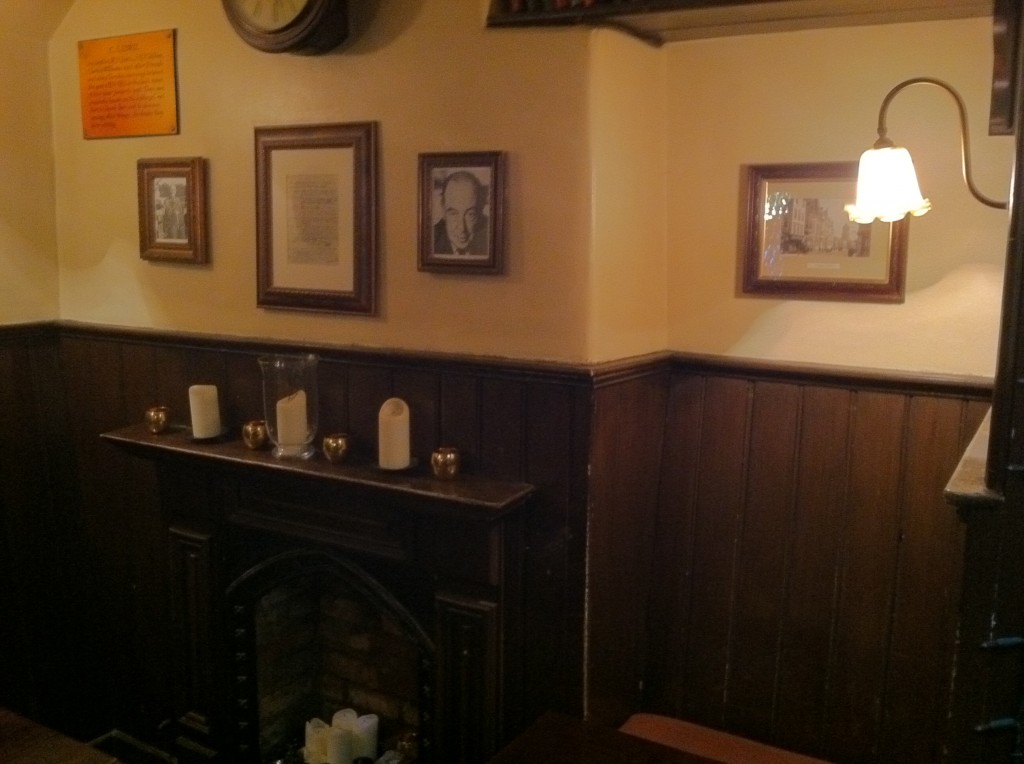
Although their contributions to the Oxford academic community, including teaching and tutorial responsibilities, and continuing solid scholarship in medieval literary epics took precedence in their time commitments, they always found time to devote to creative enterprises in verse writing and fiction, the latter arguably for what both Lewis and Tolkien became most famous in Middle Earth and Narnia fables that are compendia of mythology, saga, medieval craft and intelligences other than human and animal. Tolkien said the general rubric in which his tales best fit was the genre of legendarium.
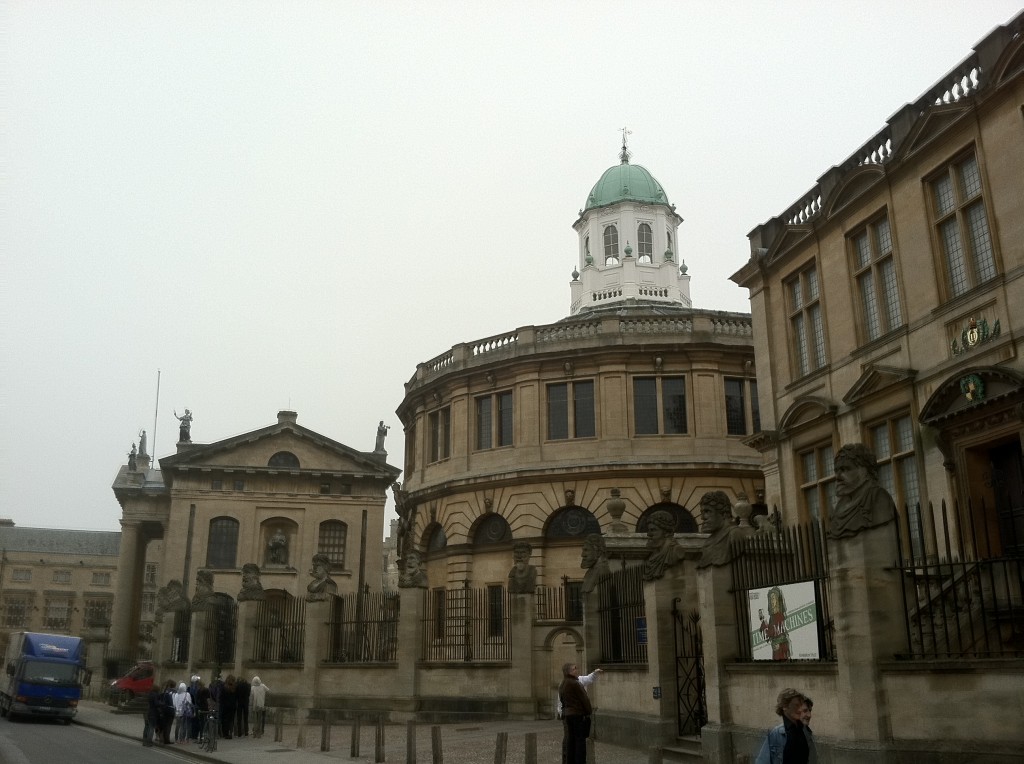
The Oxford the Inklings knew best beyond their own quarters, academic lecture halls and meeting places included Broad Street with the Sheldonian Theater and Blackwells Bookshops as well as the different parish churches like Holy Trinity Church in nearby Headington Quarry where Lewis, an Anglican, and St. Anthony of Padua Church in Headington where Tolkien, a Catholic, privately worshipped. As a sort of reminder to be religiously civil (Lewis once waspishly quipped that he was not usually fond of Papists and philologists although Tolkien was both), ever-visible in the middle of the old cobblestones of Broad Street is the yet unpaved stone cross where Hugh Latimer and Nicholas Ridley, Anglican bishops, and Archbishop of Canterbury Thomas Cranmer were burned at the stake for heresy as Anglican bishops under “Bloody” Queen Mary in 1555-56. Fortunately, the Inklings’ good sense and recognition of rare literary genius made their stamp on each other’s work. If both wise and foolish animals talk in both Tolkien and Lewis, it’s only a short walk to Christchurch College where hardly a full generation before them Charles Dodgson wrote as Lewis Carroll and smaller beasts converse over tea instead of a pint of good ale at Eagle and Child.
While Lewis finally accepted a professorship at Cambridge in the 1950’s where his scholarship was fully rewarded – as Cynthia Havens notes, he remained in his Headington house, The Kilns, outside Oxford – his longer academic presence at Oxford University is rightly celebrated. Even the pub sign of Eagle and Child, a pub in the St Giles neighborhood since 1650, had mythological associations not lost on Lewis and Tolkien. The Greek myths of Zeus have a famous tale where Zeus in his eagle guise carries off the child Ganymede, one often painted in art, e.g., Rembrandt’s version. Regardless whether this pub sign has a Classical evocation, eagles have benevolent roles in both Lewis and Tolkien. Eagles often carry humans to safety, as in the Great Eagles carrying hobbits to safety from Mordor in Tolkien, or eagles also fighting on the side of good in Lewis’ Narnian Battle of Beruna. C.S. Lewis’ great talking eagle is wisely named Farsight, an attribute of Lewis himself who took the long view of history. Those who know history can better understand the past, thus are more realistic about the present, and can even be prescient about times to come because past and present lead to the future. Lewis, like Tolkien believed mythology to be a deeper and perhaps a divine echo of truth.
